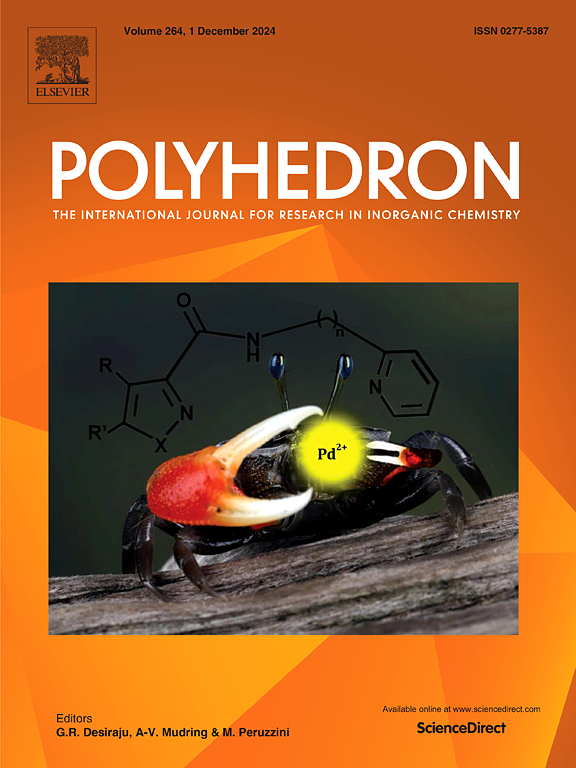Chemistry of uranium and thorium complexes towards challenging transformation: A recent trends
IF 2.4
3区 化学
Q2 CHEMISTRY, INORGANIC & NUCLEAR
引用次数: 0
Abstract
Over the last hundred years, significant progress has been made in the chemistry of organo-f complexes, enhancing our understanding of their reactivity in both stoichiometric and catalytic processes. In the last three decades, there has been a significant rise in interest surrounding the electrophilic d0/fn chemistry of organo-f element complexes, attributable to their distinctive structure–reactivity relationships and remarkable efficacy in homogeneous catalysis. The influence of ligand design, encompassing electronic and steric considerations, on the catalytic efficacy of organo-f-complexes in diverse organic reactions is now broadly acknowledged. Notable progress in actinide chemistry has underscored their unique efficacy compared to lanthanides and transition metals. The stability of low-valent actinide complexes and the function of 5f orbitals in bonding and reactivity are, nevertheless, issues that continue to be extensively debated. Although actinides may share certain characteristics with transition metals in their chemical behaviors, they frequently reveal complementary or even enhanced reactivity. The increasing number of records in the Cambridge database highlights their escalating significance, facilitating more advanced chemical designs. The conventional view of actinide complexes as highly oxophilic has been limited by catalytic poisoning, which has restricted their use in oxygen-related processes. As a result, applications for these compounds have mostly found usage in cyclic ester polymerization, small-molecule activation, and hydroelementation. This review presents a comprehensive update on the synthesis, characteristics, and applications of important organoactinide complexes in organic processes. In conclusion, we present our Quo Vadis perspective, posing critical inquiries and articulating our insights regarding the future trends and advancements in this domain.

求助全文
约1分钟内获得全文
求助全文
来源期刊

Polyhedron
化学-晶体学
CiteScore
4.90
自引率
7.70%
发文量
515
审稿时长
2 months
期刊介绍:
Polyhedron publishes original, fundamental, experimental and theoretical work of the highest quality in all the major areas of inorganic chemistry. This includes synthetic chemistry, coordination chemistry, organometallic chemistry, bioinorganic chemistry, and solid-state and materials chemistry.
Papers should be significant pieces of work, and all new compounds must be appropriately characterized. The inclusion of single-crystal X-ray structural data is strongly encouraged, but papers reporting only the X-ray structure determination of a single compound will usually not be considered. Papers on solid-state or materials chemistry will be expected to have a significant molecular chemistry component (such as the synthesis and characterization of the molecular precursors and/or a systematic study of the use of different precursors or reaction conditions) or demonstrate a cutting-edge application (for example inorganic materials for energy applications). Papers dealing only with stability constants are not considered.
 求助内容:
求助内容: 应助结果提醒方式:
应助结果提醒方式:


